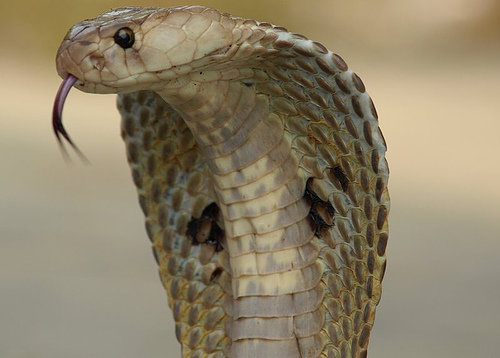Facts About Naja
The genus *Naja*, commonly known as cobras, comprises some of the most recognizable venomous snakes in the world. These "true" cobras are distributed across Africa, Southwest Asia, South Asia, and Southeast Asia. It's important to note that other snakes, such as the king cobra and the rinkhals, are often referred to as cobras as well, but they belong to different genera.
In 2009, a significant taxonomic revision merged the genera *Boulengerina* and *Paranaja* with *Naja*, expanding the genus to include 38 species. The name "Naja" is derived from the Sanskrit word "nāga" which simply means "snake."
Cobras within the *Naja* genus are characterized by their slender bodies, which can grow up to 3.1 meters in length. When threatened, they exhibit a distinctive defensive display: raising the front part of their bodies and spreading their necks to appear larger and more intimidating.
All *Naja* species pose a significant threat to humans, as their bites can be fatal. Their venom primarily attacks the nervous system, causing paralysis, and can also induce tissue damage and affect the heart. Some species, known as spitting cobras, possess the unique defense mechanism of being able to spit their venom at potential threats. The Caspian cobra is noted for being the most venomous among them, with its venom being particularly lethal to laboratory mice.
Cobras are medically significant due to the number of bites and fatalities they cause. The severity of a bite and the specific cobra species involved can greatly influence the outcome. The Caspian cobra and the Philippine cobra are especially dangerous because of their highly toxic venom.
Recent studies have led to the discovery of new species and taxonomic revisions within the *Naja* genus. Some snakes that were once considered subspecies have been elevated to full species status. Molecular research has also supported the inclusion of species from other genera into *Naja*. According to a proposal by Wallach et al., the genus is now believed to contain four subgenera.

 Senegal
Senegal